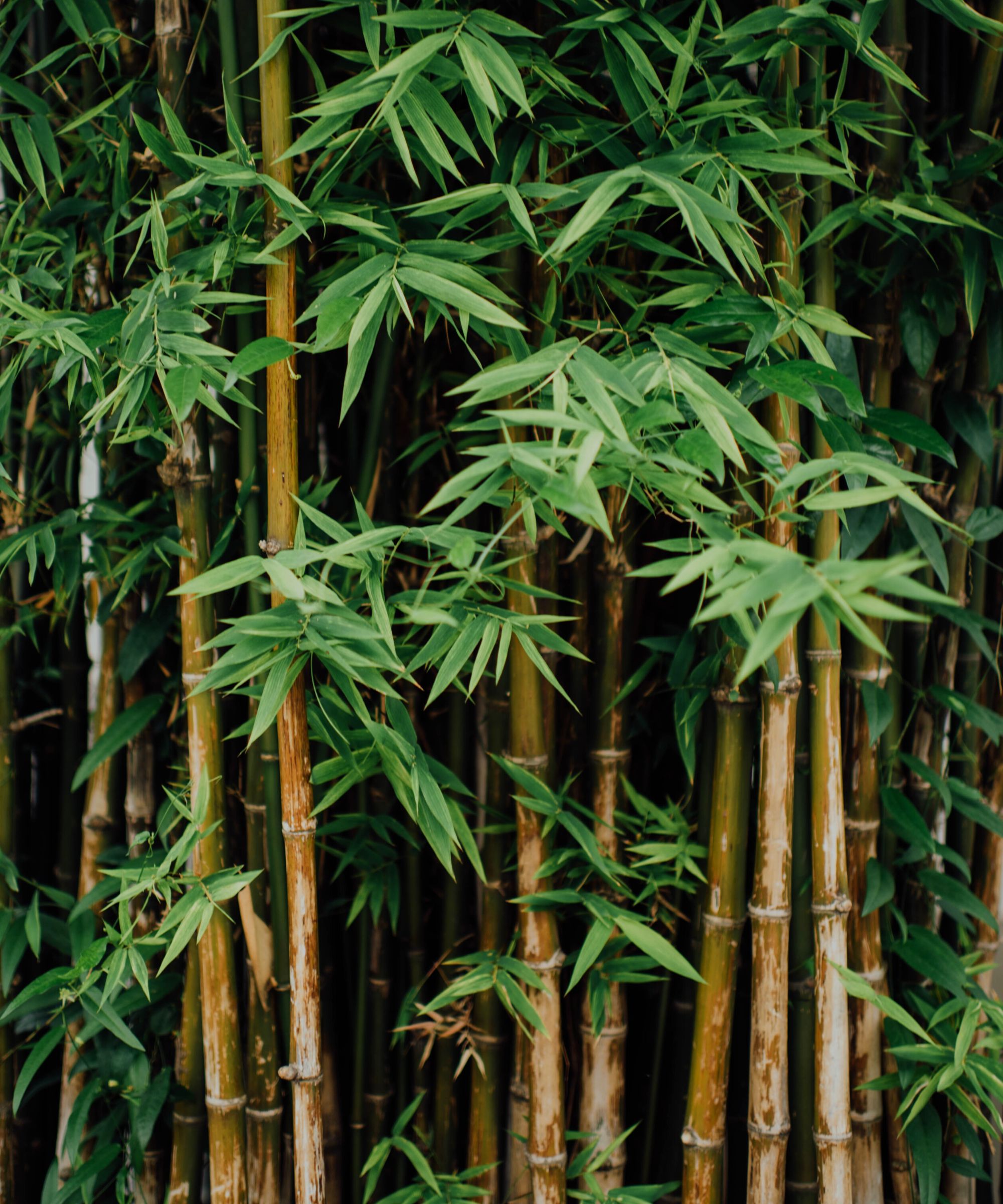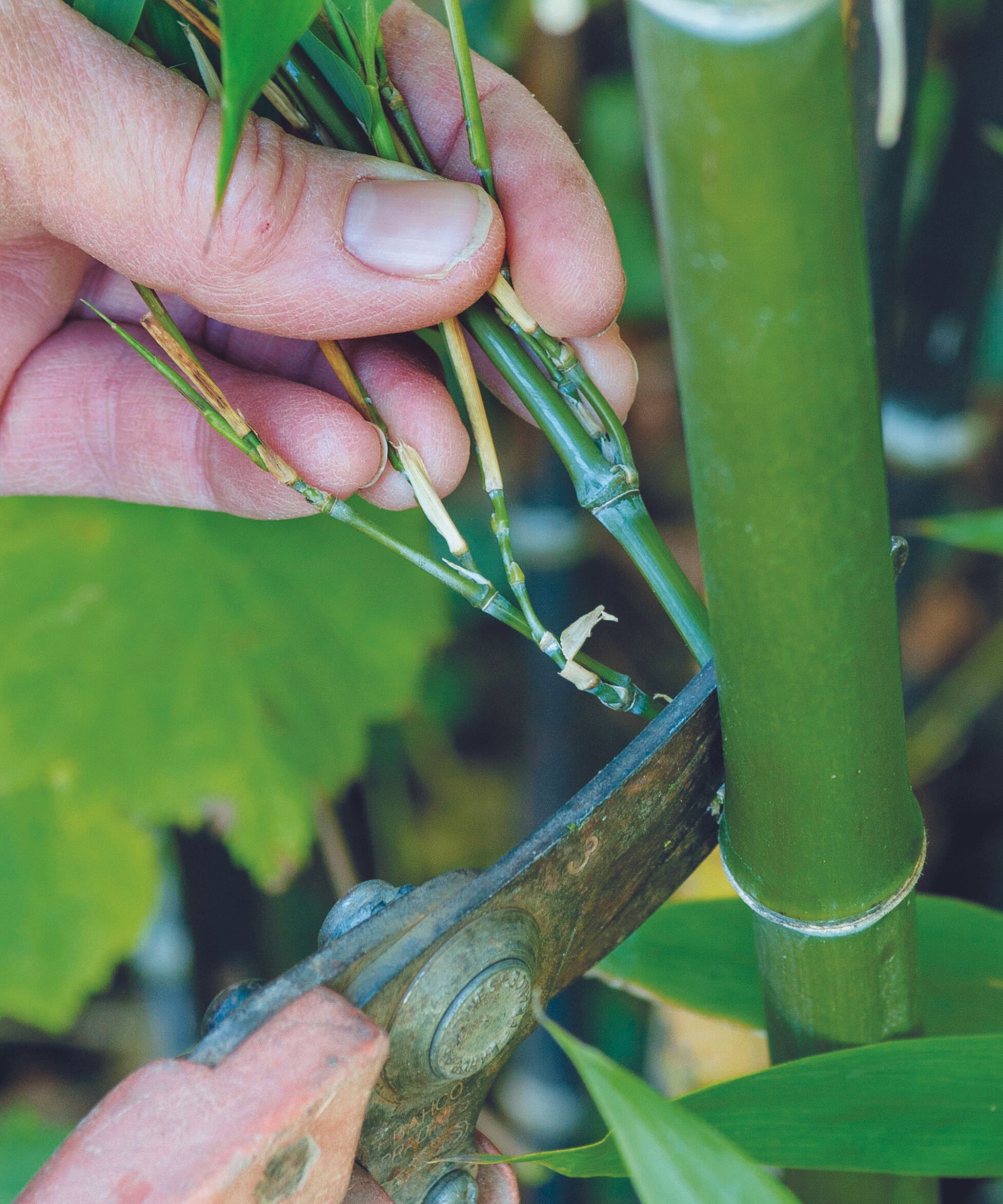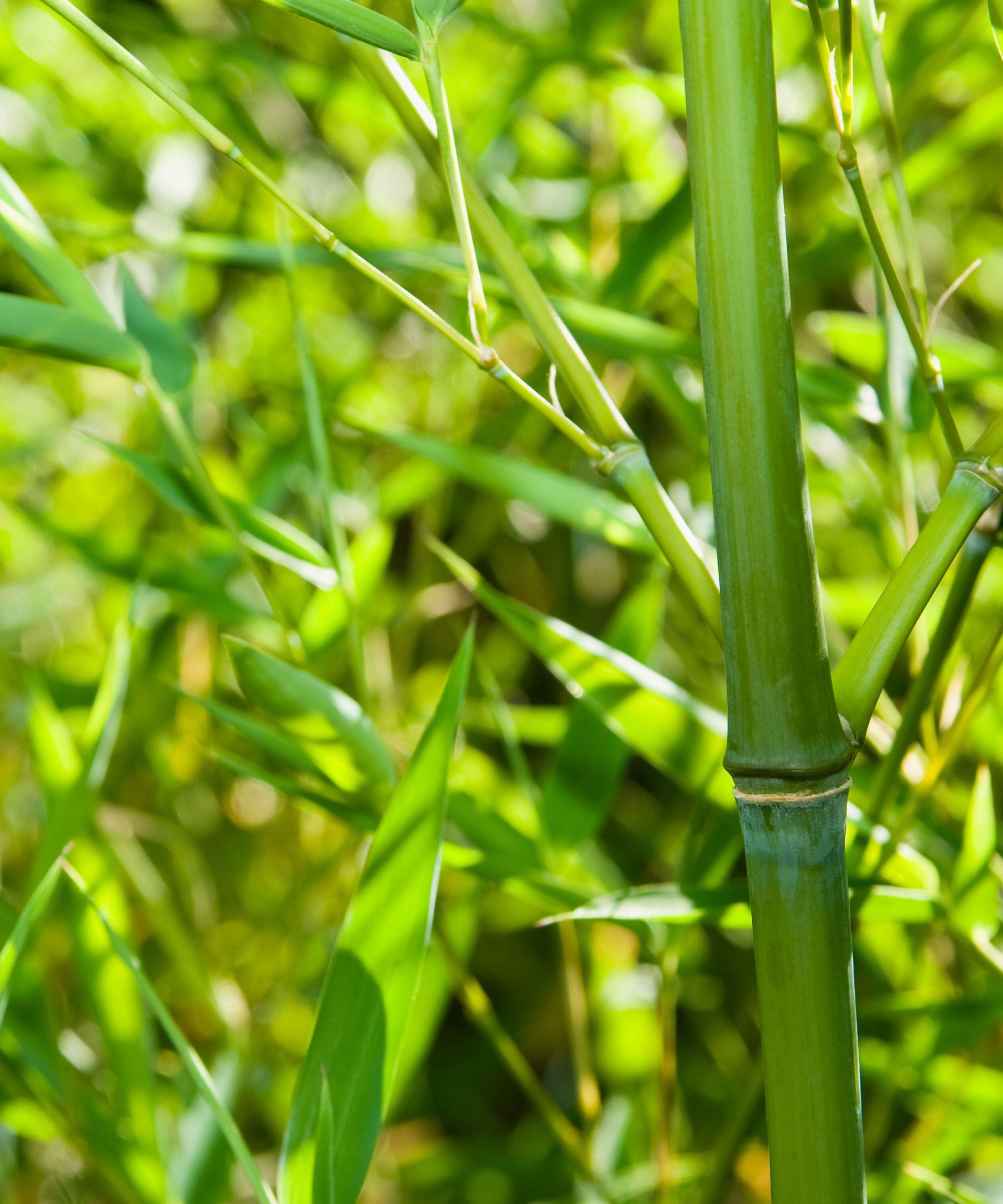How to cut bamboo – for immaculate perennial plants
Learn how to cut bamboo to control plant growth and maintain a tidy garden with this guide


If you have a bamboo plant in your garden, you might be wondering how to cut bamboo to control its growth or maintain its impressive appearance.
Bamboo is a fast growing plant that can often reach up to 10 or 12 feet tall, and has a diverse range of uses, from making a great sensory garden plant to crafting furniture, however, it is ultimately an invasive plant that can quickly take over your garden and block light, meaning you may want to know how to stop bamboo from spreading.
What's more, its strength can make it difficult to manage so learning when to cut bamboo as well as best cutting practices is important to make it a manageable addition to your garden ideas.
Make sure you know how to care for bamboo with this guide to get the best results.
How to cut bamboo

Cutting bamboo is relatively easy to do if you have the right tools and only needs to be done a few times a year depending on growth conditions and your ideal height.
‘There are a variety of bamboo plants that can require different tools to cut efficiently,’ explains Rachel Grow, garden editor for Homes & Gardens. ‘Dense masses of thicker bamboo may require motorized cutting tools such as a chainsaw or a hacksaw. More delicate bamboo that grows less densely can be managed with a pair of sharp, heavy-duty pruning shears or a sharp knife.
‘If you are planning on pruning your bamboo bushes to maintain their appearance rather than dispose of the plant, it is a good idea to sanitize your shears to prevent diseases,’ Rachel adds. ‘Between cutting plants, clean your trimmers to prevent the spread of dangerous bacteria around your garden.’
Design expertise in your inbox – from inspiring decorating ideas and beautiful celebrity homes to practical gardening advice and shopping round-ups.
To cut the bamboo culm (otherwise known as a stalk), find a space between the nodes and wrap it with masking tape to help with splintering. A node is a small ring of protrusion from the main culm where leaves extend outwards from. A top tip for cutting bamboo is to cut diagonally as opposed to horizontally through the culm. Applying pressure on a downwards slope can help to overcome the plant's innate strength and durability.
When to cut bamboo

Despite being a fast-growing plant, bamboo shouldn’t need cutting until it is well established in your garden. This can take anywhere between three and five growing seasons. Cutting bamboo after these seasons helps to maintain the plant's vitality as well as restore its neat, attractive appearance.
Bamboo, unlike many other garden plants, can be cut at any time of the year to maintain its height and its vitality, as stressed or undernourished bamboo plants turn yellow and being to die. Despite this, it is best practice to cut bamboo after the new shoots had emerged in the springtime each year. Allowing this new growth to develop means you are less likely to crush or otherwise damage it as you tend to the larger plant.
Bamboo can be grown and trimmed to form a hedge and is one of the best privacy hedges to reduce noise in your garden. To achieve this, you should only cut bamboo once a year after the new canes have grown to full height around summer.
How to cut bamboo for propagation

Learning how to take plant cuttings is a great way to create an abundant garden full of your favorite shrubs, perennials, and trees.
Bamboo is a great plant for propagation and can be cloned from cuttings throughout the year. Because of the bamboo plants' dense root structure, propagating this grass is easier from a cutting than digging up and separating the root mass.
When looking to propagate a bamboo culm, you should select a stem that is one to two years old and a minimum of one inch in diameter. Cut culms that are approximately one foot long, cutting a few inches below a node so that the majority of the cutting is above the node.
To encourage new root growth, lightly score the node with a sharp knife. Wet the cuttings and plant them directly into the soil, burying about half to two-thirds of the culm. It is important when propagating bamboo to keep the cut culm moist and warm, whilst keeping it out of direct sunlight.
Propagating bamboo can be tenuous, however, and may not work 100% of the time as the cutting is susceptible to rotting. If successful, a new bamboo plant shall begin to grow within a few months.
Does bamboo regrow when cut?
When cutting bamboo at the top of the cane, it will not regrow but simply produce new leaves to provide enough energy for its expansive root system. Cutting the bamboo at the base of a culm, however, will result in regrowth as the cane replaces itself over time. Because of this, cutting bamboo at the base of the culm is not an effective way to get rid of the plant.

Chiana has been at Homes & Gardens for two years and is our resident 'queen' of non-toxic living. She spends most of her time producing content for the Solved section of the website, helping readers get the most out of their homes through clever decluttering, cleaning, and tidying tips. She was named one of Fixr's top home improvement journalists in 2024.